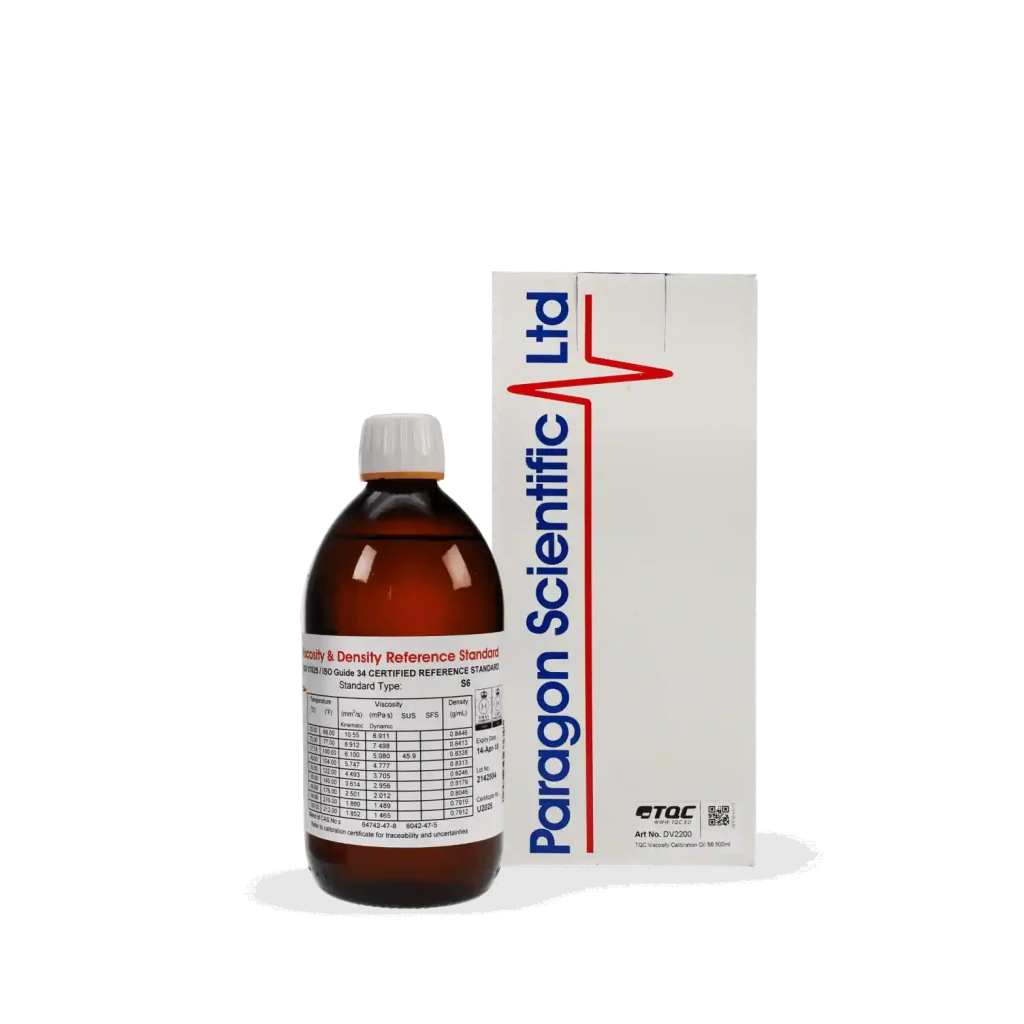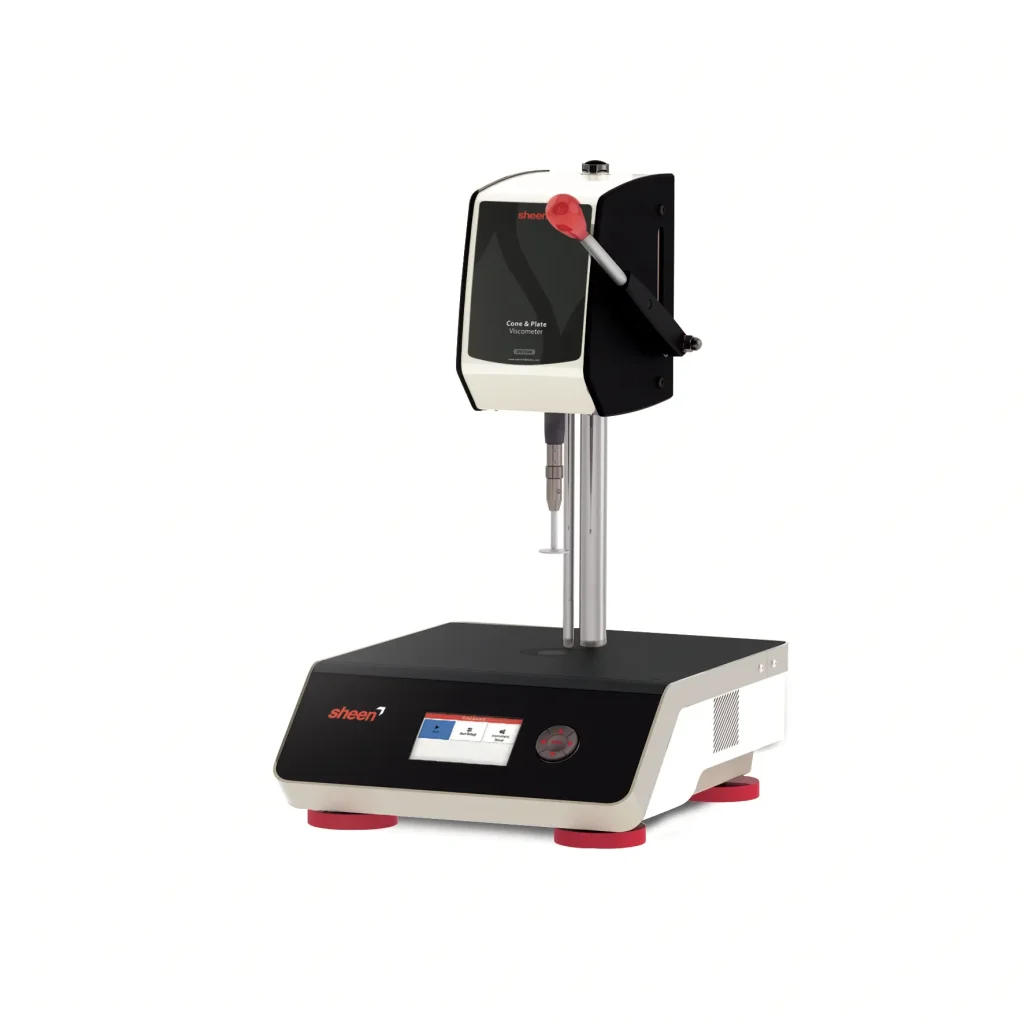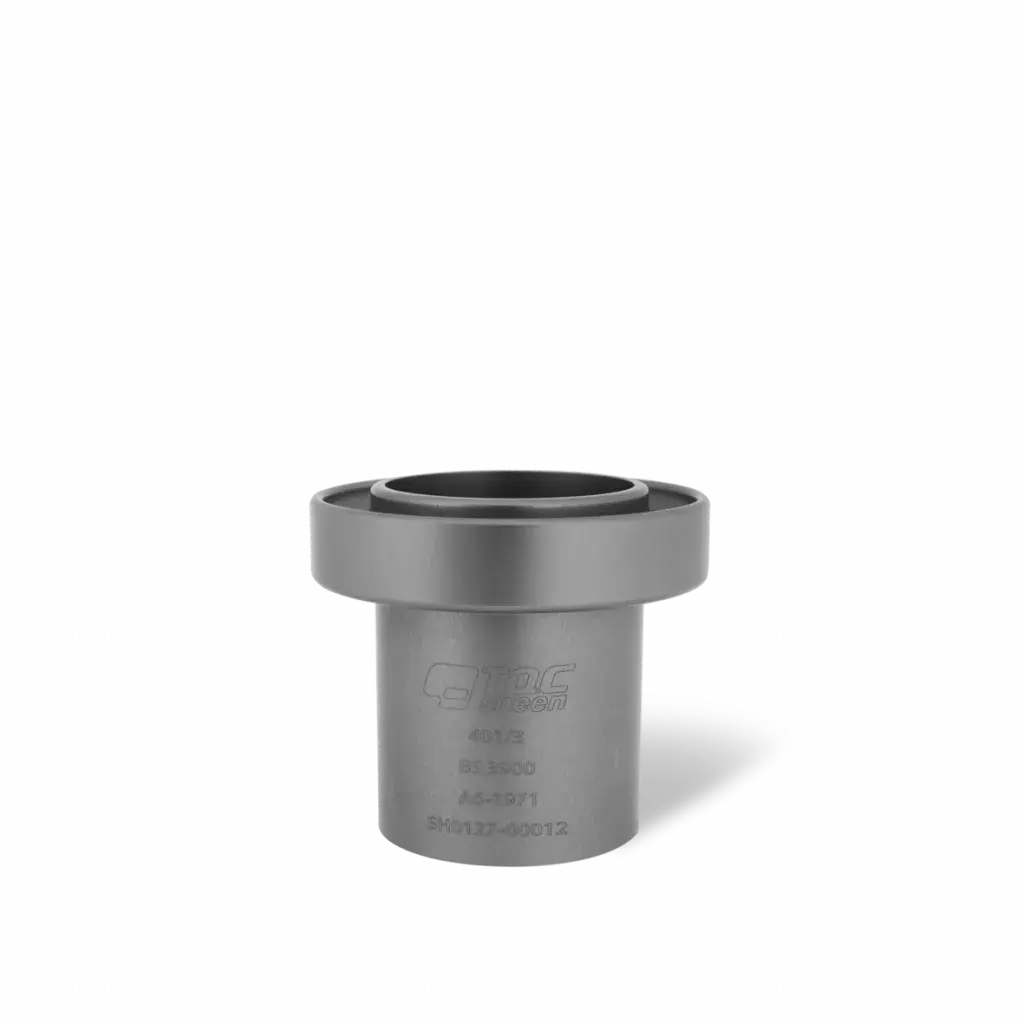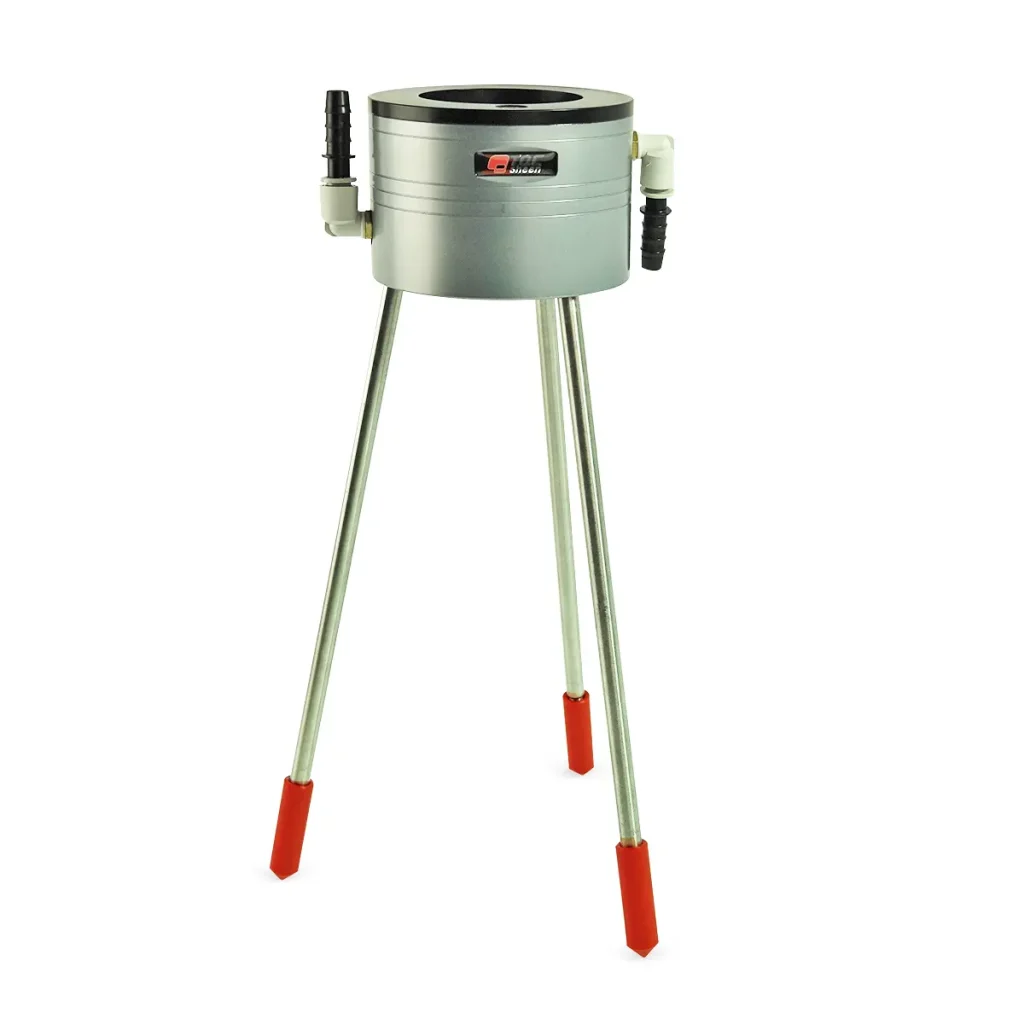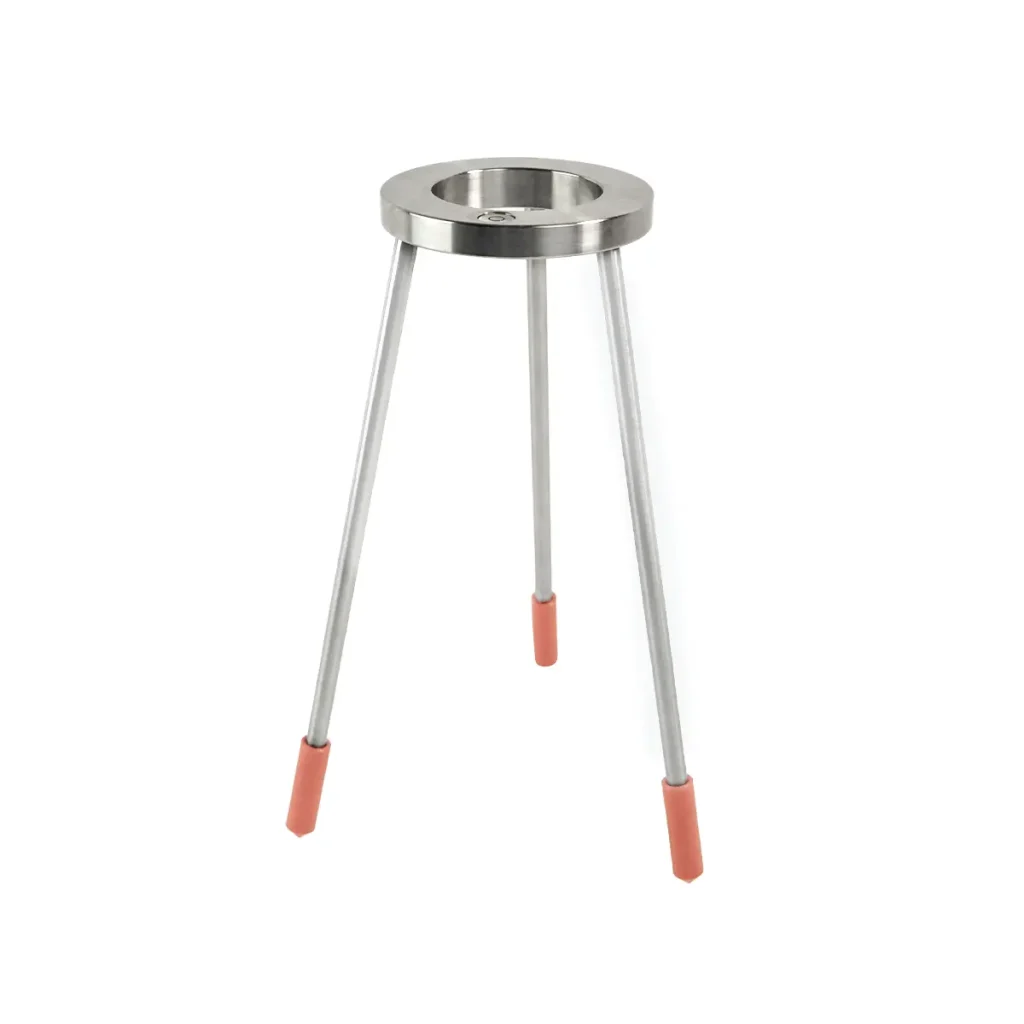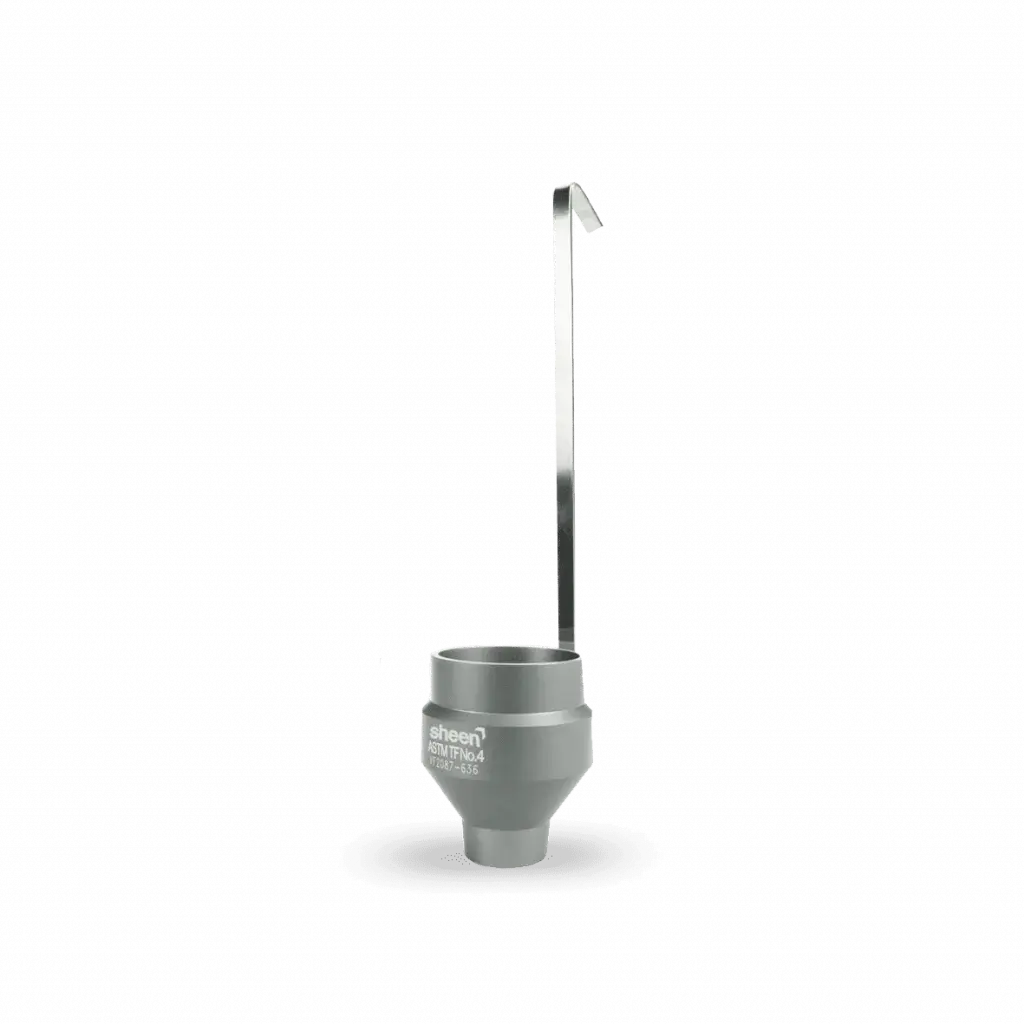Partner
Viscosity measuring devices from
TQC Sheen

Viscosity
Viscosity is the resistance of a liquid to movement or deformation. Testing the viscosity of a liquid or gas can provide information about how the sample will behave under certain circumstances. By measuring viscosity, for example, it is possible to predict how quickly oil will flow out of a spout or how quickly paint will dry.
The iP viscosity conversion table
To understand how the values measured in a viscosity test relate to the properties of the liquid being tested, you need to be able to convert them. When using a viscometer, the force required to move the liquid is usually converted into centistokes (cSt). In combination with the number of seconds, this allows the viscosity to be determined.
In our table you will find the formulae you can use to ensure that your sample complies with the relevant industry standards.
Key factors in the viscosity calculation:
- Temperature
- Cup size
- Selection of the oil
You can find more information about the factors to be considered in our practical table.
TQC Sheen viscosity conversion disc
The TQC Sheen Viscosity Conversion Disc is an easy-to-use conversion table for comparing the viscosity (in cSt) with the flow time of different viscosity cups.
TQC Sheen Standard - Viscosity Calibration Oils
High-quality viscosity calibration oils for the precise calibration of TQC Sheen viscosity cups and rotational viscosity meters.
The most common methods of viscosity testing
The dynamic rotational viscometer method
This method is often used in production laboratories and as part of a robust quality control procedure. It measures the torque required to rotate an object that has been immersed in the sample liquid to be tested. The measurement indicates the viscosity of the sample.
Digital Krebs viscometer DV2300
This modern testing machine is based on the popular traditional KREBS method, which uses a weight-driven rotating paddle to measure the viscosity of the paint at a constant speed of 200 rpm. The torque generated is proportional to the viscosity of the sample and can be converted into viscosity (cP) or weight (gms) units.
Digital cone & plate viscometer CP1 DV2500
Utilising high-precision microprocessor control, this device is both fast and accurate. It has a temperature control plate that allows the viscosity to be tested in a range between 5°C and 65°C and accurately controls the applied shear rate to 10,000S-1 (B.S./ISO requirements) or 12,000S-1 (ASTM).
Digital Rotothinner™ viscometer DV2700
A flexible two-in-one device that gives you a very high degree of control during the viscosity reduction process while providing a very useful stability analysis. It has three different spindles, one plate and two ball spindles, and offers three different measuring ranges up to a maximum of 350 poise.
Digital Gel Strength Tester - Viscometer DV2400
The digital TQC Sheen Gel Strength Tester is particularly suitable for assessing the yield strength and consistency of thick paints and other materials such as gels, fillers and more.
Digital multi-spindle viscometer DV2600
The TQC Sheen digital multi-spindle viscometer is the universal workhorse for viscosity measurement. In accordance with the Brookfield method, this multi-spindle viscometer offers a wide range of applications.
The kinetic method of discharge cups
This relatively simple method involves placing the sample in a container with a hole in the bottom and then measuring the time it takes to fill a beaker below. Each beaker design is unique, with the Ford and Zahn beakers being some of the most commonly used.
Viscosity cup ISO 2431
Sheen Viscosity Cup ISO 2431 - a range of viscosity cups made of titanium anodised aluminium or stainless steel (SS303) with fixed stainless steel nozzle (inner cavity)
Viscosity cup Afnor
Sheen AFNOR viscosity cups, another range of precision-manufactured viscosity cups made of anodised titanium for paints, varnishes and other liquids.
Viscosity cup BS (401)
The BS viscosity cups are made of anodised aluminium with an integrated nozzle. (Please note that the cup does not have a stainless steel insert)
Viscosity cup DIN 53211
The TQC Sheen viscosity cup DIN 53211 made of titanium anodised aluminium or stainless steel for measuring the viscosity of paints, varnishes and other liquids. Very precise, with fixed stainless steel nozzle.
Viscosity cup DIN 53211 with replaceable nozzle
Viscosity cup similar to DIN 53211 with interchangeable nozzle for measuring the viscosity of paints, varnishes and other liquids.
Viscosity cup ASTM D1200 Ford
The Ford viscosity cup ASTM D1200 is a range of viscosity cups made of titanium anodised aluminium for measuring paints, inks, varnishes and other liquids.
Tempering jacket for viscosity cup
The TQC Sheen temperature control jacket for laboratory viscosity beakers is a double-walled housing that brings the viscosity beaker with cooled or heated liquids to the desired temperature.
Tripod stand for viscosity cup
Our TQC Sheen tripod stand for viscosity cups is a stainless steel stand for viscosity testing suitable for ASTM, DIN, AFNOR and ISO laboratory viscosity cups.
Ring stand for viscosity beakers
Our TQC Sheen tripod stand for viscosity cups is a stainless steel stand for viscosity testing suitable for ASTM, DIN, AFNOR and ISO laboratory viscosity cups.
The kinetic method of the dipping spout cups
This relatively simple method involves placing the sample in a container with a hole in the bottom and then measuring the time it takes to fill a beaker below. Each beaker design is unique, with the Ford and Zahn beakers being some of the most commonly used.
Immersion viscosity cup ISO 2431
Sheen Viscosity Cup ISO 2431 Immersion - a range of viscosity cups made of titanium anodised aluminium or stainless steel (SS303) with fixed stainless steel nozzle (inner cavity) and handle
Immersion viscosity cup tooth ASTM D1084 D4212
Immersion viscosity cups Zahn offers a range of stainless steel (SS303) viscosity cups with a fixed stainless steel mouthpiece and handle. Choose immersion cups that meet ASTM D1084 and D4212 testing standards.
Immersion viscosity cup DIN 53211
Immersion viscosity cup DIN 53211 made of titanium anodised aluminium or stainless steel for measuring paints, varnishes and other liquids during application or production.
Disposable dip viscosity cup based on DIN 53211
The TQC Sheen disposable viscosity cup, similar to DIN 53211, is a practical plastic version of our popular metal viscosity cup, with most of its excellent properties.
Immersion viscosity cup Lory
The TQC Sheen Lory cup is designed for quick measurements on site or during the production process.
The falling ball viscometer method
In this method, the viscosity is determined by dropping a ball of known density through a sample liquid and measuring how long it takes to fall. A similar procedure can also be carried out with a falling piston.
The oscillating viscometer method
An oscillating electromechanical resonator is immersed in the liquid sample and measures the degree of damping of the liquid, allowing the viscosity to be determined.
The capillary viscometer method
This is one of the oldest methods of measuring viscosity, first developed in 1800. It measures the time it takes for a volume of liquid to travel the length of a capillary tube. They were known as Ostwald or Ubbelohde viscometers.


